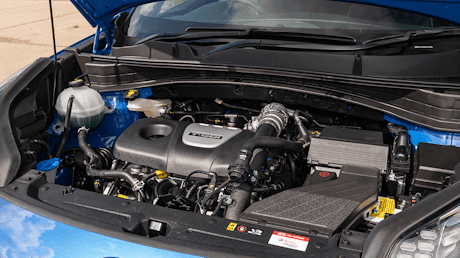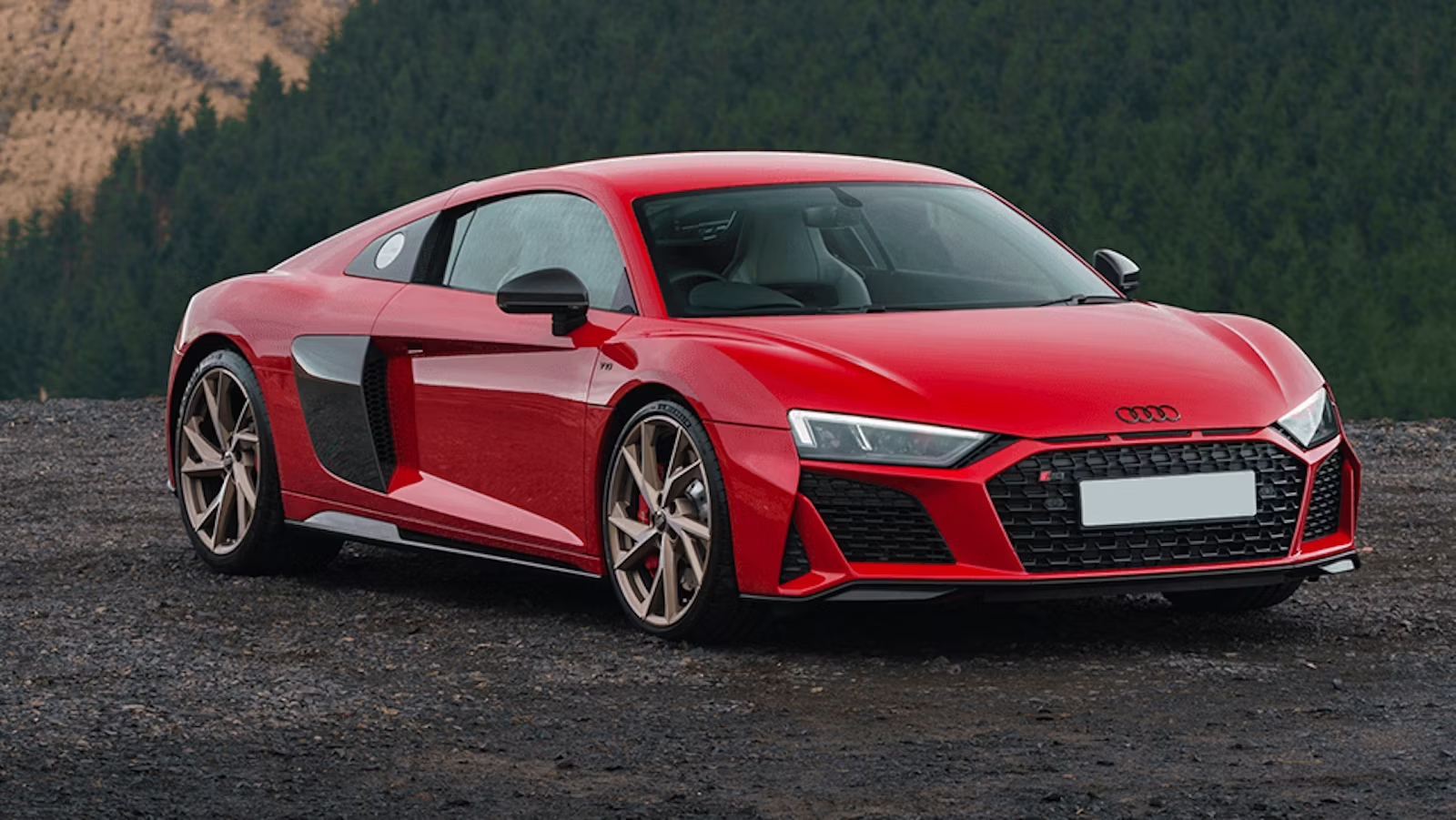Car engine sizes explained
September 07, 2022 by carwow staff

Deciding which engine you want in your next car may seem complicated.
You’ll need to consider performance, fuel economy, tax and other costs. How you use your car has a big influence, too. It’s enough to make your head spin.
But don’t worry, this guide is here to help you through all the factors to help you decide which engine your next car should have.
What does engine size mean?
Engine sizes are pretty easy to understand as a concept. The more litres it has, the bigger the engine is.
Litres, in this case, refers to the capacity an engine has, with the figure referring to the total volume of all cylinders it has. In short, the larger the volume, the more fuel an engine can burn.
You may see your car’s engine listed as a three- or four-figure number on your V5C, for example; 2,298cc. This is the exact cubic centimetres of capacity — though for simplicity’s sake these are rounded up to litres (each litre contains 1,000 cubic centimetres). In this example, 2,298cc would be rounded to 2.3-litres.

1.0-litre engines

Engines of 1.0-litre or less typically feature three or four cylinders and many now use turbochargers for extra power.
You’ll find them in anything from tiny city cars like the Hyundai i10 to medium-sized family cars like the Ford Focus, producing up to around 125hp. Their official fuel economy figures look pretty high but you may need to rev the engine and work it quite hard to get up to speed or to overtake.
Drive like this often and you’ll struggle to get near the official figures – equally if you regularly carry three or four passengers or a lot of stuff. If that sounds like the sort of trips you make regularly, you make need to look for something bigger.
1.0-2.0-litre engines

Engines between 1.0- and 2.0-litre are more common amongst larger family hatchbacks and mid-size SUVs.
Most engines in this range will be turbocharged and have around 150hp. They often claim to have similar real-world economy figures to smaller 1.0-litre engines. However, cars with larger engines will typically be more expensive than smaller equivalents.
You’ll find some hot hatches, such as the Toyota GR Yaris and Ford Fiesta ST, in this range too.
2.0-3.0-litre engines

Engines between 2.0- and 3.0-litres are mostly found in bigger saloons, estate cars and SUVs and will typically have power in the range of 200-300hp.
These tend to be thirstier than smaller engines, but offer a lot more performance as a result. It’s this range of engines you’ll start to see in serious performance cars too, such as the Porsche Cayman.
3.0-litre+ engines

Engines larger than 3.0-litres are increasingly rare, found mostly in huge SUVs and high-end performance cars. These will come with six, eight or even up to 10 or 12 cylinders.
These tend to produce masses of power, but they also use a great deal of fuel. You’ll need to be prepared for hefty running costs.
What size engines do hybrid cars have?
This varies from hybrid to hybrid. The Toyota Prius – arguably the world’s best-known hybrid car, has a 1.8-litre engine that works in conjunction with an electric motor, while the Kia Niro hybrid has a 1.6-litre engine. Plug-in hybrids can also have engines of varying sizes. The Volkswagen Golf GTE uses a 1.4-litre engine, the BMW 3 Series 330e has a 2.0-litre engine, while the performance orientated Porsche Cayenne E-Hybrid has a 3.0-litre V6, as does the McLaren Artura.
Do electric cars have engines?

From a technical perspective, yes, as an engine is a machine that converts other forms of energy into kinetic energy (movement). A petrol engine converts chemical energy into kinetic energy, while an electric motor converts electricity into kinetic energy.
Electric cars don’t have internal combustion engines, though, which is what is colloquially meant when talking about a petrol or diesel car’s engine.
You’ll often see electric motors rated using kW (kiloWatts) of power instead of hp, with kW capable of being converted to horsepower if you’re looking for an easy way to compare performance with existing internal combustion engines cars. Multiply a car’s kW rating by 1.35 to find its power in horsepower.
Considerations when choosing a car engine size
Running costs
Typically speaking, the larger an engine is, the more fuel it will use and the more emissions it will produce. The more emissions a car produces, the more its road tax will cost.
If your main focus is low running costs around town, a small car with a 1.0-litre turbocharged engine may be your best bet. If you do lots of long journeys then a bigger, more powerful petrol or diesel engine may use less fuel.
Insurance tends to be lower for cars with smaller engines too, though this will vary by model.
Town driving
If you’re regularly driving around town, a car with a smaller engine will be your best bet. There’s not much point in having more power than you need, and your bank balance will be thankful for it too.
Motorway driving
If you spend most of your time driving on the motorway, a mid-size diesel engine will be your best bet. These offer strong fuel economy, and a decent amount of grunt when it comes to overtaking.
Going fast
Got the need for speed? You’ll want something with a high-power, larger-capacity engine.
That said, some of the best hot hatches have engines around 2.0-litres, so it’s not a hard-and-fast rule.
Emission/clear air zones
The size of a car’s engine has no bearing on whether it attracts a charge from emission zones like London’s ULEZ, as such zones use a car’s Euro standard to determine how clean it is.
What engine size is my car?
You’ll find the engine size of your car listed on your V5C. This will be listed under ‘cylinder capacity’ and be presented as an exact ‘cc’ figure.
Alternatively, you can put your vehicle reg into the Government’s vehicle information checker to see it, too.
Cars Change? Carwow!
Looking for a new set of wheels? With Carwow you can sell your car quickly and for a fair price – as well as find great offers on your next one. Whether you’re looking to buy a car brand new, are after something used or you want to explore car leasing options, Carwow is your one stop shop for new car deals.















